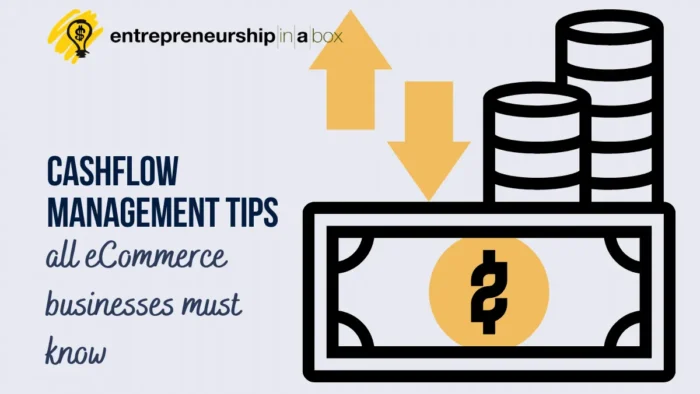You may have the best products and services in the world, but without effective cashflow management, you won’t see your dream business through.
Increasing numbers of entrepreneurs are getting into eCommerce because it has been such a rapidly growing sector in the past ten years and continues to show solid growth in the future. It’s also a field you can start small in and grow over time.
However, with so much competition to continually go up against (and more constantly on the way), you need to be strategic about the steps you take moving forward. To start or grow your online venture in 2023 or beyond, you need to know some essential cashflow management tips.
Keep a Close Eye on Money Coming In and Going Out of the Business
It’s crucial to keep a close eye on the money coming in and going out of your business so you know if your cashflow is becoming a problem or not. You can’t implement cashflow management if you don’t know enough about it. Examine your firm’s bank accounts and credit card statements monthly or preferably weekly, so you can see at a glance what your venture’s financial health is like.
If you leave this data gathering for too long, you could suddenly find yourself in a bad position where cashflow is negative, and you don’t have many options to sort it out. If you can spot problems early, though, you can take steps to address them.
For example, you might need to seek financing options, such as obtaining small business loans or some investment, before things get too dire. Keep in mind that it takes time to assemble all the paperwork for such avenues and get loans approved or find investors, so the sooner you can come up with a plan by spotting potential cash flow problems, the better.
Also, you will need to find ways to increase your online business revenue.
Find Ways to Cut Costs
To manage cash flow effectively, it’s also helpful to continually look for ways to reduce outgoings, so you have less money leaving your firm’s accounts. You can go about this in many ways. For example, see if you can get better deals on packaging and shipping expenses or dropshippers if you use them, and save money on office supplies, utilities and telecommunications rates, and software tools.
See if there are any tasks you could outsource to automated software programs, too, rather than paying for external contractors or internal staff members to do. Keep a close watch on marketing campaigns to see which ones aren’t providing a decent return on investment and can be cut, too.
Related: eCommerce Software for Global Expansion: Going Beyond Borders
Renegotiate Pricing and Terms with Your Suppliers
One of the best ways, though, for online stores to reduce their annual expenditure is to spend a lot less on inventory. Part of this involves managing inventory effectively so you don’t lose so much money on “dead” or damaged stock that doesn’t move and you can’t sell, or at least can’t sell for a decent amount. However, you can also lessen the financial burden by talking to your suppliers to see if you can get better prices and terms from them.
Talk to your regular vendors to see if they will provide you with lower rates for goods. You might have to commit to buying a certain number of items per period, spending a certain dollar amount, or even not buying from their competitors. These are things to weigh up, but often concentrating on buying more from fewer suppliers can lead to significant cost savings all around.
Also, see if suppliers will offer you better conditions, such as having longer to pay your bills, enjoying free or discounted shipping, and even getting bonuses such as extra products for regular orders or value-added items if you buy goods in package deals. Ask vendors how they can go about sweetening the deal for you; you might soon be saving a lot more money every year than you might think.
Pre-Sell Goods
Another inventory tip that can help with cash flow management is not buying too much stock upfront. Instead, see if there are items that you can pre-sell to test the market. Before committing to trying new lines that your suppliers make available, why not list the items on your website or marketplaces, etc., for buyers to consider? You can mention that items aren’t available yet, but you’re taking orders now.
This strategy lets you see how many items you’re likely to sell and what the longer-term demand may be before you invest much money in wares that people may not be so interested in.
To better manage your eCommerce store’s cash flow, you should also be on the lookout for additional revenue streams, such as new customer types to target or product types to offer, and ways of marketing your business. Work on bolstering customer referrals and upsells, too, and encourage reorders from your clients.
Attending to all of these factors can make a massive difference to how much money comes into your business versus how much goes out, and you’ll find it easier for cashflow management.





